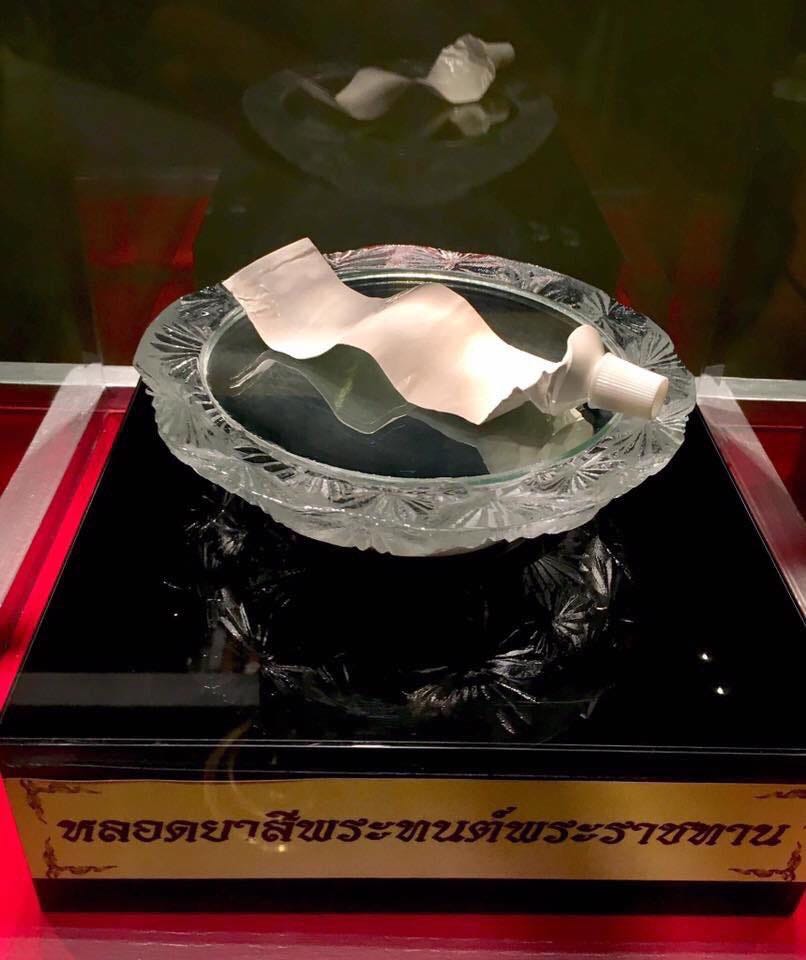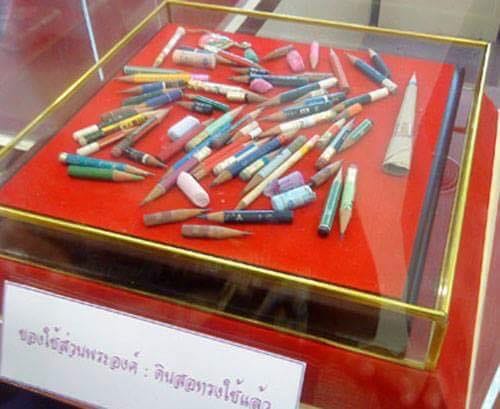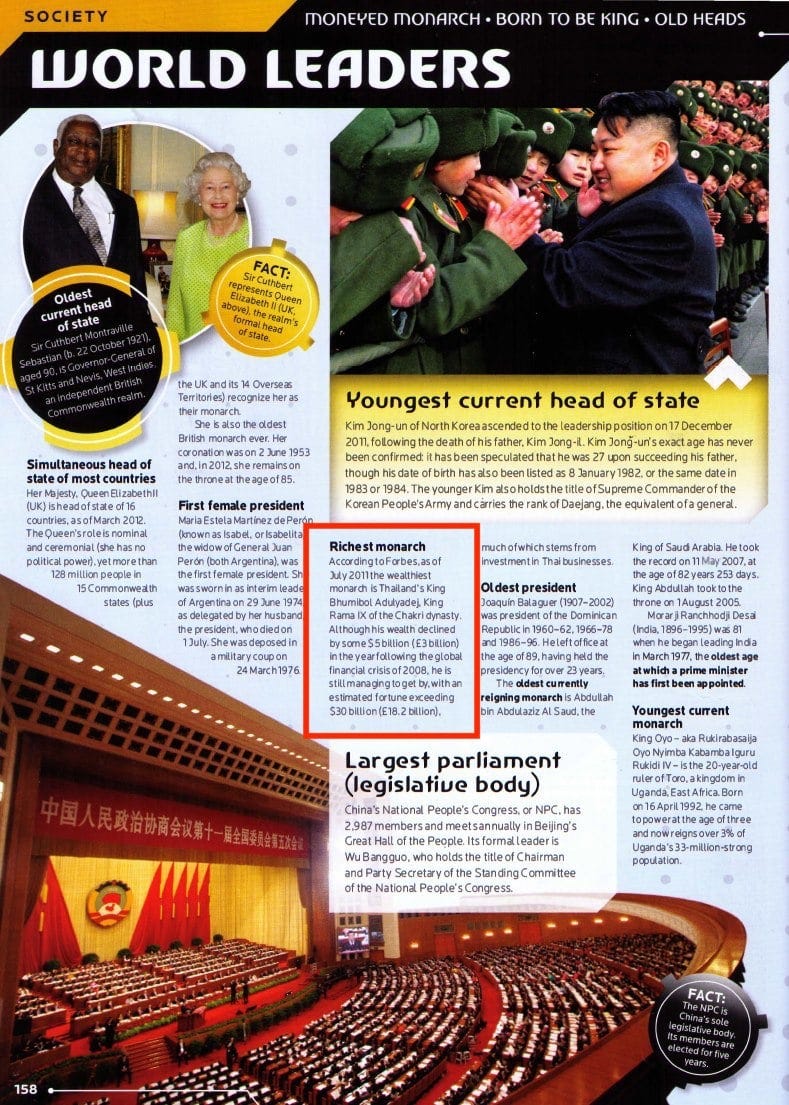Royal riches
Thailand's monarchy is getting relentlessly richer as ordinary people struggle to survive. Here are the facts about the vast wealth of King Vajiralongkorn.
Thailand’s latest fiscal year began on Friday October 1 with a state budget of 3.13 trillion baht that was approved by parliament at the end of August. Despite the economic crisis caused by the coronavirus that has devastated the crucial tourism and hospitality sectors, as usual the regime allocated an absurdly large chunk of the budget to the monarchy and military.
According to an excellent analysis by Prachatai, at least 35.76 billion baht of taxpayer money — well over a billion US dollars — was allocated to the palace in the 2021/22 fiscal year. This represents 1.15 percent of the entire state budget, an extraordinarily vast sum for a country to spend on a supposedly purely symbolic monarchy in the 21st century.
What makes it even more obscene is that the Thai monarchy is already among the wealthiest royal families on the planet, but continues to guzzle taxpayer funds that are desperately needed by ordinary people struggling to stay afloat during the pandemic.
The palace has never been honest about the extent of its wealth, and most media have done an extremely poor job of finding out the facts, so most reporting about the size of the Thai royal fortune is inaccurate and incomplete.
This edition of Secret Siam is a detailed analysis of the riches of the royals.
For more than a decade, most international media have made two main claims about royal riches. They routinely say the king has assets of $30 billion, and that this makes him the wealthiest monarch in the world. Both of these statements are inaccurate.
Meanwhile, the palace and its elite royalist supporters insisted for years that the monarchy is not egregiously rich and that the royal fortune belonged to the whole nation rather than the king. This was just another lie.
Even specialist international financial media like Reuters, Bloomberg and the Financial Times which have the expertise and resources to properly research royal wealth have been routinely wrong about this really important issue. In the past couple of years, a few journalists have started to do a better job of investigating the financial clout of the Thai monarchy, but most media still just repeat the same old fake news without bothering to take the time for research that is not particularly hard to do.
The Thai monarchy is the most important conglomerate in the kingdom, and probably the biggest in terms of assets too, mostly via the Crown Property Bureau which controls the majority of palace wealth.
Other huge transnational corporations like Charoen Phokphand Group, ThaiBev, Kasikorn Bank and Bangkok Bank are intimately entangled with the palace and owe their success to remaining in the magic circle of royal patronage. The monarchy is at the centre of the web, but its role in the Thai economy remains extraordinarily unreported.
As the most respected expert on the Crown Property Bureau, the academic Porphant Ouyyanont who died last year, wrote in an analysis of Thai royal wealth in 2015:
The Crown Property Bureau has long been ignored in Thai economic literature. However, the Bureau is a huge conglomerate and holding company, with an income in excess of 10 billion baht, and with links throughout the economy. It is also the largest landholder in the country.
It’s extraordinary that the immense importance of the monarchy in Thailand’s economy has never been properly acknowledged. But this was no accident. The palace has sought for decades to pretend that the royals don’t really have any significant riches at all.
The reason royal wealth was such an embarrassment to the palace is that among the most ridiculous myths of the modern Thai monarchy is the pretence that King Bhumibol was a frugal and humble monarch who had no interest in money or power, and was fully focused on toiling tirelessly to improve the lives of ordinary people.
During the 1990s, the palace heavily promoted Bhumibol’s so-called “sufficiency economy” philosophy as a major contribution to global wisdom. It was mostly just a collection of platitudes plagiarised from the 1973 book Small is Beautiful by E.F. Schumacher praising sustainability and moderation, and Bhumibol’s interpretation of it was profoundly reactionary, telling Thais they should be content with their place in the kingdom’s social hierarchy and not seek to rise above their station. As anthropologist Andrew Walker wrote in 2006:
The enthusiasm with which the new regime in Thailand has latched onto the “sufficiency economy” concept underlies its regulatory force. Over the past decade or so a number of different approaches have emerged which seek to moderate and regulate the aspirations of Thailand’s rural poor. Expressed in various elitist, royalist and activist forms these approaches have argued that the rights of rural people should only be fully respected provided they are willing to pursue livelihoods that make modest claims on natural resources and government budgets.
Royal propaganda depended heavily on pretending that Bhumibol lived a simple and modest life. Thais were told that Bhumibol lived such a spartan existence that he went to extreme lengths to squeeze every last drop of toothpaste out of each tube before getting a new one. Some of his old toothpaste tubes are still treated like holy relics in Thailand.
Bhumibol was also revered for supposedly never buying a new pencil until he had sharpened the previous one right down to a stunted nub. Royal pencils are displayed in museums in Thailand too as evidence of Rama IX’s frugality.
After the 2006 coup that overthrew Thaksin Shinawatra, royalists deployed the myth of Bhumibol’s abstemious lifestyle to attack the brash capitalism of the deposed former prime minister. Here’s a Ministry of Energy advertisement from 2007 that draws on palace propaganda to tell Thais to conserve electricity:
So it was extremely awkward for the palace when Forbes magazine started putting Bhumibol at the top of their annual ranking of the world’s richest royals.
In 2007, Forbes estimated the Thai monarchy’s wealth to be around $5 billion, which was far below the real figure. But in 2008 they published a much more accurate number — $35 billion. According to the magazine, this made Bhumibol the wealthiest monarch on the planet. In 2009, with asset prices collapsing all over the world due to the global economic meltdown sparked by the subprime mortgage crisis in the United States, Forbes revised down its assessment of Rama IX’s fortune to $30 billion, but he kept his position as number one on the list.
The Forbes figures were mainly based on the work of Porphant, whose extensive research published in the Journal of Contemporary Asia in 2008 estimated that Crown Property Bureau wealth was $27.4 billion at the end of 2005. Porphant reckoned that the value of crown assets had climbed as high as $41 billion by the end of 1996 before the Asian economic crisis wrought severe damage.
Adding to the embarrassment of the monarchy, the annual Guinness Book of Records began naming Bhumibol as the world’s wealthiest king.
International media began routinely reporting that the Thai monarchy had assets of $30 billion, and over more than a decade most of them have never bothered to update this number, or to do their own research into the size of the Thai royal fortune.
Meanwhile, the palace was paranoid about the bad publicity generated by growing awareness of how rich the royals really were. It undermined the fiction that Bhumibol devoted all his time and money to developing the kingdom, making generous donations from his own funds. If that was true, how was he still so wealthy? It exposed his sufficiency economy ideology as dishonest hypocrisy.
So they tried to pretend that the king wasn’t really rich at all.
Palace propaganda routinely claimed that the assets of the Crown Property Bureau belonged to the nation, not to the monarchy. The 2010 annual report of the CPB sought to specifically refute the Forbes ranking of the richest royals, insisting that royal wealth was owned by all Thais:
Crown property is state property and public property, for which the government through the minister of finance as the chairperson is responsible, and which the CPB takes care of.
Bhumibol’s close confidante Sumet Tantivejkul, who led the king’s Chaipattana Foundation, mocked news stories saying Bhumibol was wealthy, telling Matichon newspaper: “Don’t think that farangs are always smart. Many farangs are stupid.”
Thai diplomats around the world were ordered to write angry letters to media who reported how rich Bhumibol actually was. For example, in 2012, Arjaree Sriratanaban, minister-counselor at the Thai embassy in Washington, wrote to Forbes to insist it was inaccurate to “include assets belonging to the CPB, which are held in trust for the nation, into its calculation of the King’s personal wealth”:
In contrast to an ultra-rich image that Forbes has tried to portray of the Thai monarch, anyone who knows Thailand and has driven by Chitralada Palace in Bangkok can clearly see the agricultural research station His Majesty has built upon the palace grounds. The laboratory serves as an incubator for ideas of over 4,000 Royal Development Projects in communities throughout the country. His Majesty’s palace is probably the only monarch’s residence in the world to be adorned with demonstration rice fields, fish ponds, a cattle barn, a rice mill and several small factories.
In 2016, Pornpimol “Pauline” Kanchanalak, who is now a senior advisor to foreign minister Don Pramudwinai, wrote a whole column in The Nation newspaper devoted to denouncing me. Among the many things she accused me of was dishonesty about the royal riches, which she insisted belonged to the state, not to the king:
The Crown Property Bureau is owned by the Thai government and therefore it belongs to the state, and is not the Royal Family's personal coffers. The chairman of the CPB is the finance minister. The account book of CPB is subjected to government auditing just like other government agencies. The revolution that took place in 1932 and changed the Thai political system from an absolute to a constitutional monarchy also confiscated the assets of the royal household and turned them into state assets, which they remain to this day.
But none of this was true. It was all just a pack of lies.






